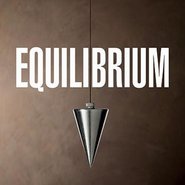- About
- Subscribe Now
- New York,
June 17, 2014

 Salvatore Ferragamo Museum's new exhibit
Salvatore Ferragamo Museum's new exhibit
Italian fashion label Salvatore Ferragamo’s museum in Florence is launching the exhibit "Equilibrium" to explore its roots in footwear.
The nine room exhibit will honor Salvatore Ferragamo’s dedication to the science and the art of the human foot. The display will likely present consumers with a deeper understanding of the brand’s origins.
"Ferragamo's Equilibrium exhibition is offering consumers a glimpse into how his passion for foot research ties in with the fields of art, science, architecture, archaeology, circus and dance," said Ryan Hattaway, president of Mogul Media Group, Miami, FL.
"It explores the relationship and role that feet play in everything we do—as the keystone of the human story—utilizing famous works of art, photography, film, architecture and performance pieces as the tools for storytelling," he said.
Mr. Hattaway is not affiliated with Salvatore Ferragamo, but agreed to comment as an industry expert.
Ferragamo was unable to comment by press deadline.
Fashion blended with science
Ferragamo's Equilibrium exhibit will remain open from June 19 through April 15, 2015.
The exhibit will focus upon Mr. Ferragamo’s studies of the human foot, specifically the role the foot’s arch has in supporting the body. His research in fields such as science, art, architecture, archaeology, circus and dance gave him valuable information about the human body that helped shape the brand’s shoes.
Mr. Ferragamo was most concerned with the arch because that is the part of the foot that supports the entire body. Mr. Ferragamo built his shoe line around his attempt to find the best possible way for feet to be on the ground while supporting the weight of one’s body.
Ferragamo Museum
Mr. Ferragamo ultimately discovered that the body had a line of equilibrium that could be drawn from the head to the horizontal plane of the ground. The vertical line is the axis of equilibrium. The concept is a combined knowledge of anatomy and physics that was used by Medieval and Renaissance artists.
The exhibit features the research and discoveries of Mr. Ferragamo and works by similarly interested artists.
For example, the second room presents the journey of humankind’s first steps nearly 3.6 million years ago to 1969 when humans took the first step on the moon. The timeline is presented through images by photographer, Eadweard Muybridge.
Sculpture of a dancer at the museum
Other rooms include sculptures from Auguste Rodin, the Roman Forum and Henri Matisse. One section of the exhibit studies the walks of the world’s most influential leaders of the past two centuries. Another part celebrates acrobats and tightrope walkers.
The Equilibrium exhibit will bring Salvatore Ferragamo fans through an artistic interpretation of scientific research and data. It will also allow consumers to gain a deeper understanding of the fashion designer’s inspirations.
Historical behind-the-scenes
Ferragamo’s museum and Equilibrium exhibit will give consumers insight into the designer’s dedication to his brand. This concept of a behind-the-scenes historical approach in a museum or exhibit is not unusual among fashion labels.
From collaborative art installations to displaying iconic pieces of jewelry, nearly every brand has curated a museum exhibit to showcase their heritage and identity from their own perspective.
By curating an exhibit a brand can bolster its identity through storytelling that reveals specific aspects of its history to consumers. Using education and creative exhibit installations may help reaffirm its position in the luxury market and elevate its standing in the mind of enthusiasts (see story).
Brand education, like in the Equilibrium exhibit, allows consumers a chance to gain a deeper understanding and appreciation of the brand.
For example, Swiss watchmaker Breguet appealed to watch enthusiasts through its participation in the “Precision and Splendor: Clocks and Watches at The Frick Collection,” New York.
The three historic Breguet timepieces by Abraham-Louis Breguet and his son Antoine-Louis Breguet from the late eighteenth century were the most recent creations on display. Breguet also provided major funding for the exhibit, which could strengthen its reputation in the watch industry (see story).
An exhibit’s significance is ultimately decided by the reaction of the consumers.
"Having a deeper understanding of Ferragamo's scientific research behind his products educates consumers on his level of commitment to understanding the human body and perfecting his craft by designing the most comfortable shoes possible," Mr. Hattaway said.
"The exhibit also offers consumers a unique look into these creative worlds from an often overlooked perspective—the role that feet played in every scenario—from our ancestors footprints in ancient Africa to the first steps on the moon, also highlighting famous walks that the world's most influential leaders have taken," he said.
"[Also,] the exhibit creates unique storytelling opportunities for the Ferragamo brand that educate consumers about the significance of feet and align the exhibit with a rich cultural history surrounding what may be an otherwise mundane topic."
Final Take
Nancy Buckley, editorial assistant on Luxury Daily, New York
Share your thoughts. Click here